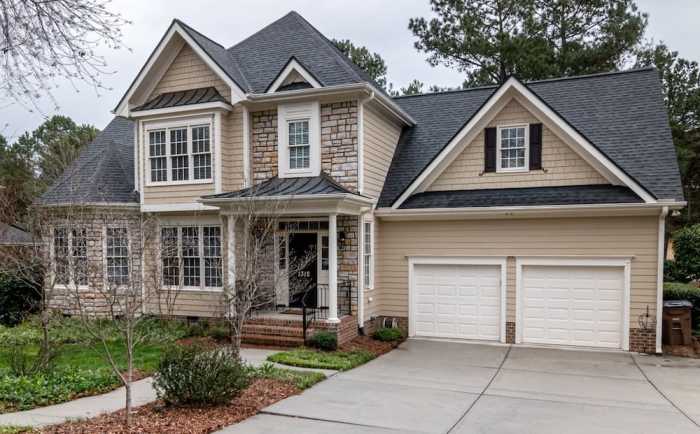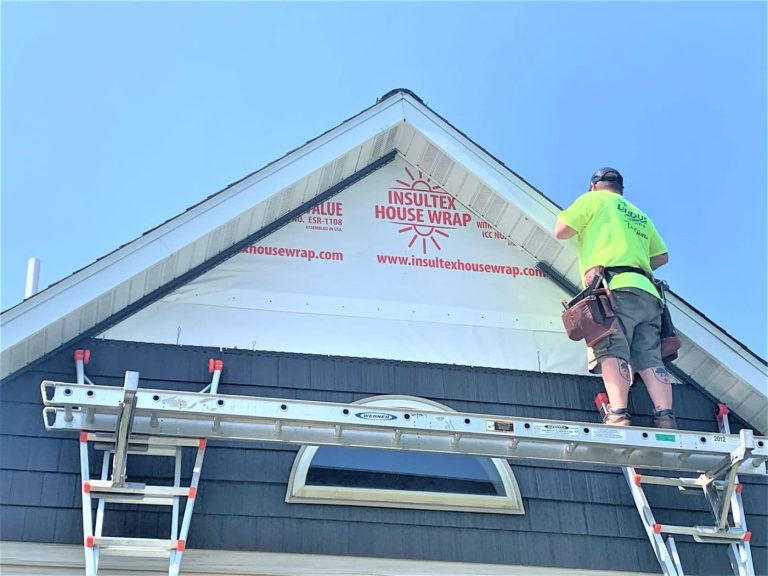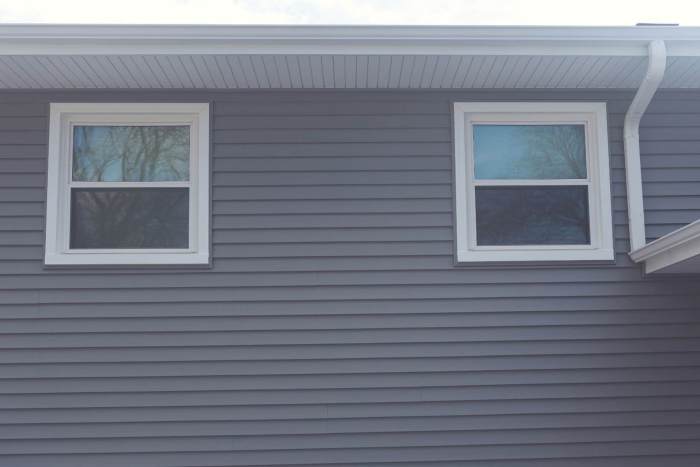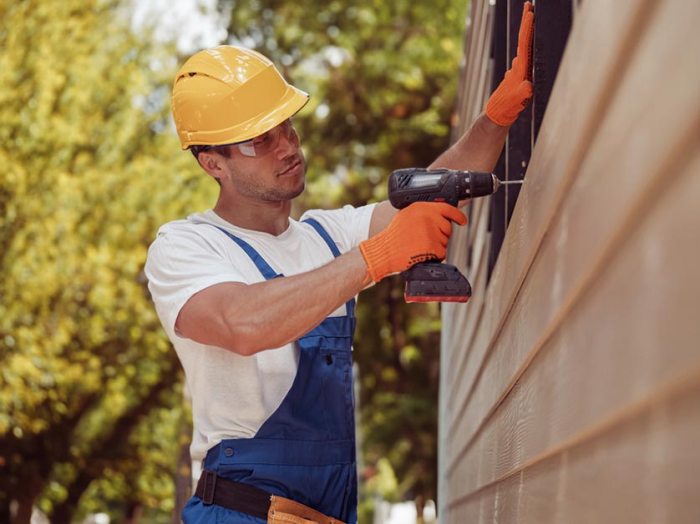Siding Contractors Your Home Improvement Guide
Siding contractors are essential for homeowners looking to enhance their properties. They handle everything from installation and repair to replacement, using various materials like vinyl, wood, and fiber cement. Understanding the different siding options, the expertise of contractors, and the process of hiring them is crucial for a successful project. This guide provides a comprehensive overview of siding contractors, from finding the right one to managing the project and resolving common issues.
This guide delves into the intricacies of working with siding contractors, exploring essential aspects like research, selection, installation, and maintenance. It covers the entire lifecycle of a siding project, from initial research to final maintenance, ensuring homeowners are well-equipped to make informed decisions.
Introduction to Siding Contractors

Siding contractors play a crucial role in home improvement, focusing on the exterior cladding of residential structures. Their expertise encompasses various aspects, from selecting the appropriate siding material to ensuring its proper installation and maintenance. They are essential for enhancing a home’s aesthetic appeal and increasing its overall value.
Siding contractors are professionals who specialize in the installation, repair, and replacement of exterior siding. They possess the knowledge and skills to handle various siding materials, ensuring that the work is completed efficiently and effectively. This includes considering factors like the climate, local building codes, and the homeowner’s preferences.
Types of Siding Materials
Different siding materials offer unique benefits and drawbacks, impacting the overall cost and longevity of a home’s exterior. Understanding these differences allows homeowners to make informed decisions aligned with their needs and budget. Common materials include vinyl, wood, and fiber cement.
Comparison of Siding Materials
| Siding Material | Pros | Cons |
|---|---|---|
| Vinyl | Low maintenance, durable, resistant to rot, pests, and extreme weather conditions. Available in a wide array of colors and styles, making it a popular choice for its aesthetic flexibility. Often more affordable than other options. | Can be susceptible to dents and scratches, less durable than fiber cement in high-impact situations. It may not last as long as fiber cement or wood siding. Can warp or crack in extreme temperatures. |
| Wood | Naturally beautiful aesthetic, offers excellent insulation properties. Often considered a classic and high-end choice. Can be customized to specific design requirements. | Requires regular maintenance (painting, sealing) to prevent rot and decay. More vulnerable to pests and weather damage than vinyl or fiber cement. More expensive to install and maintain in the long term. |
| Fiber Cement | Highly durable, resistant to rot, pests, and fire. Very low maintenance, and can withstand extreme weather conditions. Offers a long lifespan and a wide range of colors and textures. | Heavier than other materials, it can be more expensive to install initially. It may not be as aesthetically versatile as vinyl or wood siding. Installation can be more complex. |
Services Offered by Siding Contractors
Siding contractors provide a range of services beyond just installation. Their expertise extends to repairing existing siding, addressing damage, and replacing sections or entire facades.
- Installation: Professionals install siding according to building codes and industry standards, ensuring proper ventilation and water drainage.
- Repair: Repairing damaged siding, such as patching holes or replacing warped sections, is another crucial service. This prevents further deterioration and maintains the home’s exterior integrity.
- Replacement: Replacing old or damaged siding with new materials is a common service offered by siding contractors, enhancing a home’s appearance and increasing its value.
Finding Siding Contractors
Choosing the right siding contractor is crucial for a successful and lasting project. A qualified contractor ensures the job is done correctly, materials are high quality, and the final result meets your expectations. Poorly chosen contractors can lead to costly mistakes and significant frustration.
Thorough research and careful vetting are essential steps in this process. This involves understanding the contractor’s experience, reputation, and the specifics of their work. Knowing how to locate reliable contractors and what questions to ask can significantly improve the chances of a positive outcome.
Researching Potential Contractors
Proper research is fundamental to finding a reliable siding contractor. A good contractor will be able to handle various aspects of the project, from initial consultation to final cleanup. Begin your search by checking online directories or using contractor recommendation platforms. These platforms often feature reviews and ratings, offering valuable insights into past projects. Word-of-mouth referrals from trusted neighbors or friends can also be a valuable resource. Personal connections can provide firsthand accounts of the contractor’s work ethic and professionalism.
Methods for Locating Contractors
Numerous avenues exist for finding qualified siding contractors. Online directories, dedicated contractor search engines, and professional associations are common starting points. These resources often compile profiles of contractors with details about their experience, certifications, and portfolio. Referrals from trusted sources, such as real estate agents or previous homeowners, provide valuable insights into a contractor’s work and reputation.
Questions to Ask Potential Contractors
Before committing to a contractor, asking the right questions is vital. This proactive approach helps assess their capabilities and ensures they align with your project needs. Key areas of inquiry include their experience with similar siding projects, their understanding of local building codes, and their commitment to using quality materials. Specific inquiries regarding their pricing structure, payment terms, and warranty information are equally important. A thorough understanding of the contractor’s approach and processes is critical.
- Inquire about their experience with different siding materials, ensuring they are familiar with the specific type you’re considering.
- Discuss their approach to project management, including communication protocols and timelines.
- Request references from previous clients to verify their work and reliability.
- Ask about their liability insurance and bonding to ensure they have the necessary protections in place.
- Detail your budget and obtain firm quotes for the project, including materials and labor costs.
Red Flags to Avoid When Choosing a Contractor
Identifying potential red flags in a contractor can prevent costly errors. Understanding these common issues can save you time and money in the long run. By recognizing warning signs, you can steer clear of problematic contractors.
| Red Flag | Description |
|---|---|
| Lack of Clear Communication | Contractors who are unresponsive or vague about project details, timelines, or costs are often a sign of potential problems. |
| Unrealistic Promises | Guarantees that seem too good to be true often mask underlying issues. Be wary of promises that are overly optimistic or vague. |
| Insufficient Information | Contractors who avoid providing detailed estimates or explanations about their process or materials should raise concerns. |
| Absence of References | Contractors who are hesitant to provide references or fail to offer verifiable contact information should be viewed with suspicion. |
| Poor or No Portfolio | A lack of a visible portfolio or work samples can signal a contractor’s lack of experience or trustworthiness. |
Contractor Selection and Hiring
Choosing the right siding contractor is crucial for a successful and satisfying project. A poorly chosen contractor can lead to significant issues, from subpar workmanship to costly delays and disputes. Understanding the key factors involved in contractor selection and hiring empowers homeowners to make informed decisions and avoid potential problems.
Key Factors in Contractor Selection
Selecting a reliable siding contractor involves careful consideration of several crucial factors. Experience, licensing, and insurance are fundamental elements in assessing a contractor’s capability and trustworthiness. A contractor with a proven track record in similar projects, coupled with proper licensing and insurance coverage, significantly reduces the risk of encountering issues during the project’s execution.
- Experience: Look for contractors with a substantial portfolio of completed siding projects. Check for references and testimonials from previous clients. A contractor experienced in the specific type of siding you desire (e.g., vinyl, fiber cement) is highly recommended. Previous experience also provides insights into potential project challenges and solutions.
- Licensing and Permits: Verify the contractor’s licensing status with the relevant local authorities. Ensure they hold the necessary permits to perform siding work in your area. This is a critical step in ensuring legal compliance and maintaining a seamless project process.
- Insurance Coverage: Verify that the contractor carries liability insurance to protect you from potential financial losses resulting from accidents or damages during the project. General liability insurance, compensation insurance, and property damage coverage are essential considerations. This protection is a crucial component of risk management.
Steps in Hiring a Siding Contractor
Hiring a siding contractor should be a methodical process, encompassing clear communication, thorough documentation, and a well-defined payment structure. This approach ensures transparency and protects both the homeowner and the contractor.
- Requesting Bids and Quotes: Obtain quotes from at least three different siding contractors. Compare not only the price but also the proposed scope of work, project timeline, and warranty offered. Consider the level of detail and clarity in each quote. Thorough comparison ensures you’re making an informed decision.
- Reviewing Contracts: Carefully review all contracts before signing. Ensure the contract details the scope of work, materials to be used, project timeline, payment schedule, and warranty provisions. Understanding these aspects safeguards both parties involved.
- Payment Schedule: Establish a clear payment schedule with the contractor. A typical schedule might involve a deposit upon contract signing, subsequent payments during project milestones, and a final payment upon project completion. This approach fosters trust and transparency.
- Communication and Follow-up: Establish clear communication channels with the contractor throughout the project. Regular communication helps address any concerns or issues promptly. This approach ensures a smooth project progression.
Importance of Multiple Bids
Obtaining multiple bids is critical for ensuring you receive the most competitive pricing and a comprehensive understanding of potential project variations. Comparing bids from different contractors helps you identify the best value proposition for your project needs.
A well-researched and well-executed bidding process ensures a transparent and efficient decision-making process.
Sample Contract Template for a Siding Project
A sample contract template should include details like project description, materials specifications, payment schedule, project timeline, and warranties. A detailed contract template should clearly define responsibilities, costs, and expected outcomes.
| Clause | Description |
|---|---|
| Project Description | Specific details of the siding project, including the type of siding, areas to be covered, and any specific requirements. |
| Materials | Detailed list of materials to be used, including brand names, quantities, and specifications. |
| Payment Schedule | Clearly defined payment schedule, including deposit, progress payments, and final payment. |
| Project Timeline | Project start and completion dates, including key milestones. |
| Warranties | Details of any warranties offered by the contractor, including material and workmanship warranties. |
Siding Installation and Maintenance
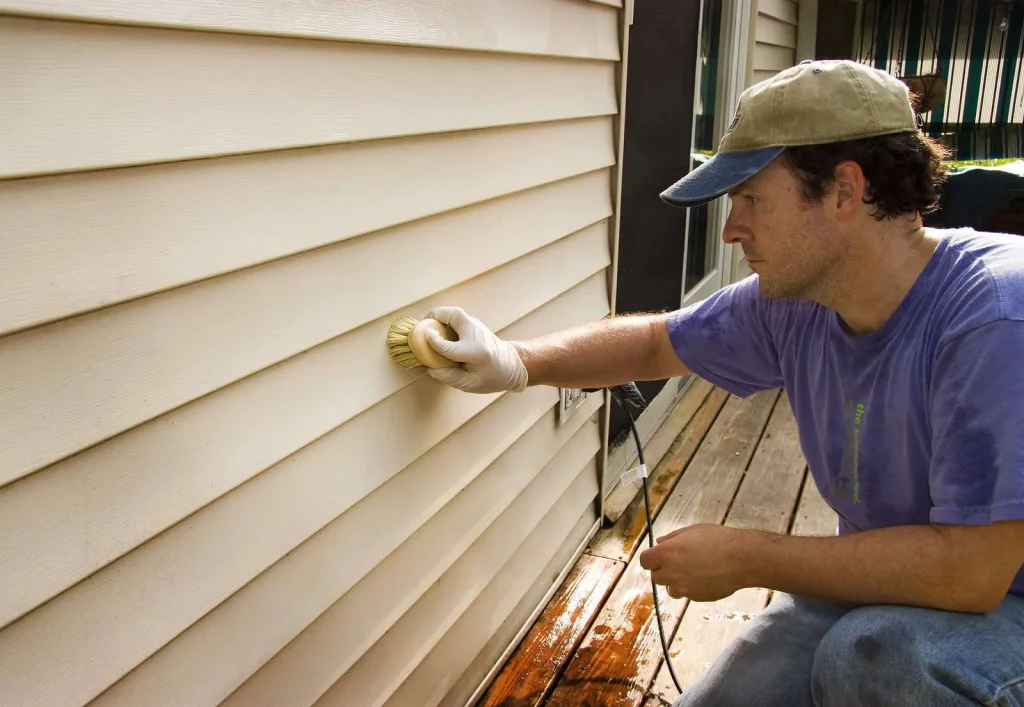
Proper siding installation and subsequent maintenance are crucial for the longevity and aesthetic appeal of a home. High-quality materials, meticulous installation, and regular upkeep contribute to a structurally sound and visually appealing exterior. Neglecting these aspects can lead to premature damage, costly repairs, and a decline in the overall value of the property.
Installation methods vary significantly depending on the chosen siding type, impacting the complexity and time required for the project. Understanding these variations and the steps involved in each process will help homeowners make informed decisions and ensure a successful installation. Proper maintenance, including regular inspections and preventative measures, is equally important for maintaining the structural integrity and appearance of the siding.
Installation Methods for Various Siding Types
Different siding materials require specific installation techniques to ensure structural integrity and optimal performance. Understanding these methods is crucial for homeowners and contractors alike. Choosing the correct method ensures longevity and minimizes future problems. For instance, vinyl siding often uses a click-and-lock system for seamless connections, while fiber cement siding necessitates careful nailing and flashing techniques.
- Vinyl Siding: Vinyl siding installation typically involves attaching panels to the wall structure using specialized clips, nails, or screws. The use of flashing is critical to prevent water damage. The click-and-lock system allows for a relatively quick installation process.
- Fiber Cement Siding: Fiber cement siding installation involves careful preparation of the wall structure, including proper nailing, flashing, and caulking. Precise measurements and accurate alignment are essential to achieve a professional look.
- Wood Siding: Wood siding requires meticulous planning and execution, including proper framing and support to ensure stability. The specific installation method will vary based on the type of wood siding and the local building codes.
Step-by-Step Guide for Proper Siding Installation
A systematic approach to siding installation is crucial for achieving a durable and aesthetically pleasing result. Careful adherence to the guidelines minimizes potential problems and ensures a professional outcome.
- Preparation: Thoroughly inspect the existing wall structure, ensuring it is sound and free of defects. Clean the surface, repair any damage, and install any necessary flashing or insulation. Accurate measurements and precise planning are essential for a successful installation.
- Framing and Support: If necessary, install the required framing and support structures to accommodate the siding material. This step is crucial for providing structural integrity and longevity.
- Installation of the First Course: The first course of siding is crucial for proper alignment and aesthetics. Careful attention to detail is vital to avoid issues with subsequent courses.
- Continuing the Installation: Continue installing the siding panels, ensuring each piece is correctly aligned and fastened. Check for gaps or misalignments and correct them immediately.
- Finishing Touches: After the entire installation is complete, inspect the siding for any damage or gaps. Caulk any gaps or cracks to prevent water damage. The installation should be reviewed by a qualified professional for approval before completion.
Importance of Regular Siding Maintenance
Regular maintenance of siding is essential to preserve its longevity, structural integrity, and aesthetic appeal. Routine inspections and preventative measures can significantly extend the lifespan of the siding and minimize the need for costly repairs.
- Regular Inspections: Periodic inspections help identify potential issues early on, preventing minor problems from escalating into major ones. Regularly check for signs of damage, such as cracks, gaps, or loose panels.
- Cleaning: Regularly cleaning the siding helps remove dirt, debris, and mildew, which can affect its appearance and longevity. Using appropriate cleaning agents can preserve the siding’s original color.
- Repairing Damage: Promptly address any signs of damage, such as loose panels, cracks, or rot. Ignoring these issues can lead to significant structural problems and costly repairs.
Common Issues and Resolution
Potential issues can arise during or after siding installation. Understanding these problems and their solutions will allow homeowners to address them proactively.
- Water Damage: Improper flashing or caulking can lead to water damage. Address any water intrusion promptly by repairing damaged areas and improving the flashing or caulking.
- Loose or Damaged Panels: Loose or damaged panels can compromise the siding’s integrity. Tighten loose panels or replace damaged ones immediately to prevent further damage.
- Pest Infestation: Pest infestations can damage siding. Contact a pest control specialist to eliminate the infestation and take preventative measures.
Preventive Maintenance Tips for Siding Longevity
Implementing preventative maintenance measures can significantly extend the life of your siding. These measures can save homeowners money and time in the long run.
- Regular Cleaning: Regular cleaning helps prevent the accumulation of dirt, debris, and mildew, which can negatively impact the appearance and longevity of the siding.
- Inspecting for Damage: Regularly inspect the siding for any signs of damage, such as cracks, gaps, or loose panels. Addressing these issues promptly will prevent further damage.
- Using Appropriate Sealants: Use high-quality sealants to fill gaps and cracks, preventing water damage and preserving the siding’s integrity.
Common Siding Problems and Solutions
Siding, the exterior face of your home, is susceptible to various issues over time. Understanding these problems, their causes, and effective solutions is crucial for maintaining the integrity and aesthetic appeal of your home. This section will detail common siding problems and highlight preventative measures.
Proper siding maintenance is essential to extend its lifespan. Ignoring problems early on can lead to significant repairs or replacements later, costing you more in the long run. This proactive approach helps protect your investment and ensures the longevity of your home’s exterior.
Identifying Siding Damage
Siding damage can manifest in various ways, affecting the overall appearance and structural integrity of your home. Common forms of damage include cracks, dents, gaps, and discoloration. Recognizing these signs is the first step towards effective solutions. Prompt identification and action can prevent further damage and maintain the value of your home.
Causes of Siding Damage
Several factors contribute to siding damage. Extreme weather conditions, such as strong winds, hailstorms, and heavy rains, can cause physical damage to the siding material. Poor installation practices, inadequate maintenance, and aging materials can also lead to problems. Furthermore, improper handling during installation can lead to early deterioration and structural compromise.
Addressing Siding Leaks
Water intrusion through siding is a significant concern. Leaks can lead to rot, mold, and structural damage. Common causes of leaks include damaged flashing, gaps around windows and doors, and improper sealing. Addressing these issues promptly is crucial to preventing further deterioration.
Dealing with Rot and Decay
Rot and decay are common issues with siding, particularly in areas exposed to moisture. Wood siding is particularly vulnerable to moisture damage. Factors such as inadequate drainage, improper ventilation, and insect infestations can accelerate the decay process. Regular inspections and prompt repairs are essential to prevent significant damage.
Determining the Need for Professional Intervention
Some siding issues can be handled by homeowners with basic skills and tools. However, more complex problems, such as extensive damage, structural concerns, or leaks requiring extensive repairs, should be addressed by a professional siding contractor. Assess the extent of the damage; if unsure, consulting a professional is always recommended. This prevents further damage and ensures the job is done correctly.
Preventing Siding Problems
Regular maintenance is key to preventing siding problems. This includes checking for damage, cleaning the siding, and repairing any gaps or cracks promptly. Regular inspections and prompt repairs will significantly extend the lifespan of your siding. Proper maintenance also protects your home’s value. For example, a thorough cleaning can remove debris and prevent moisture buildup, extending the life of your siding.
Siding Contractor Pricing and Budgeting
Understanding the costs associated with a siding project is crucial for homeowners. A well-defined budget and clear pricing from contractors can prevent surprises and ensure a smooth project execution. This section details various pricing models, factors influencing costs, and strategies for creating a realistic budget and negotiating effectively.
Typical Siding Project Pricing Models
Siding contractors typically employ various pricing models. A common approach is a fixed price, where the contractor quotes a set amount for the entire project. Alternatively, some contractors may use a time-and-materials model, charging for labor hours and the cost of materials. A hybrid approach combining aspects of both methods might also be used. Understanding the contractor’s chosen model is essential for effective communication and budgeting.
Factors Influencing Siding Project Costs
Several factors contribute to the overall cost of a siding project. Material costs, a significant factor, depend on the type of siding chosen (e.g., vinyl, fiber cement, wood). Labor costs vary based on the complexity of the project, the size of the home, and the contractor’s experience and location. The extent of preparation work, such as existing siding removal, additional repairs, and site access, significantly influences the overall price. Lastly, geographical location and local demand for siding work can also impact costs.
Detailed Siding Project Budget Template
A detailed budget is vital for managing expectations and controlling costs. A template should include:
- Project Scope: A clear description of the work, including the type of siding, areas to be covered, and any specific features (e.g., windows, doors).
- Material Costs: Detailed breakdown of the cost of different siding materials, including quantities, and any necessary accessories (e.g., flashing, trim). Consider potential material price fluctuations during the project timeframe.
- Labor Costs: Estimate labor hours required for different tasks, such as removal, preparation, and installation. Include separate estimates for different levels of expertise, if applicable.
- Permitting and Inspection Fees: Account for local permitting and inspection fees, which can vary significantly by region.
- Contingency Fund: Include a contingency fund for unforeseen circumstances or additional costs that may arise during the project.
- Total Estimated Costs: A summarized figure for the total project cost, including all elements.
Creating a Realistic Budget
Developing a realistic budget involves thorough research and careful planning. Start by gathering quotes from multiple contractors to compare pricing and ensure fair costs. Evaluate different siding options to determine the best value for your budget. Don’t hesitate to discuss your budget constraints with contractors, and be prepared to negotiate. Remember that a project budget is not static; it’s crucial to maintain open communication with your contractor throughout the project.
Negotiating Fair Pricing with Siding Contractors
Negotiating fair pricing involves clear communication and a well-defined budget. Be prepared to discuss your budget constraints and priorities with the contractor. Research similar projects in your area to get an idea of reasonable pricing. Consider asking for discounts or incentives, particularly if you’re hiring for a larger project or are using preferred payment methods. Finally, ensure that the contract articulates all terms and conditions, including payment schedules and project timelines.
Legal and Regulatory Aspects

Navigating the legal landscape surrounding siding installation is crucial for both homeowners and contractors. Understanding local building codes, licensing requirements, and homeowner rights is essential to ensure a smooth and legally sound project. Compliance with regulations protects all parties involved and minimizes potential disputes.
Compliance with local building codes and regulations is paramount. These codes often dictate specific materials, installation methods, and safety precautions for siding projects. Failure to adhere to these regulations can lead to costly fines, project delays, or even project rejection. Thorough research and consultation with local building departments are critical before commencing any installation.
Local Building Codes and Regulations
Local building codes and regulations vary significantly based on location. These codes often dictate aspects like the type of siding permitted, the required setbacks, and the necessary permits for installation. Homeowners and contractors should meticulously review the specific codes applicable to their region. Understanding these codes is critical to avoid costly errors or delays during the project.
Contractor Licensing and Insurance
Contractor licensing and insurance are vital safeguards for homeowners. Licensed contractors typically have demonstrated competence and adherence to industry standards. Insurance protects homeowners from financial liability in case of accidents or damages during the installation process. A contractor’s license and insurance policies should be verified prior to any agreement.
Homeowner’s Rights and Responsibilities
Homeowners have rights and responsibilities during a siding project. These rights often include the right to receive a detailed contract outlining the scope of work, the payment schedule, and the timeline. Homeowners also bear the responsibility of providing access to the property and ensuring the project complies with all local regulations.
Potential Legal Issues Related to Siding Projects
Potential legal issues can arise from various factors, including disputes over the contract terms, discrepancies between the agreed-upon scope of work and the final product, or issues stemming from defects in materials or workmanship. Homeowners and contractors should establish clear contracts to mitigate such issues.
Licensing and Insurance Requirements
The table below provides a summary of common licensing and insurance requirements for siding contractors in different regions. Note that these are examples, and specific requirements may vary.
| Region | Licensing Requirements | Insurance Requirements |
|---|---|---|
| Northeast US | State-issued contractor license, potentially requiring specific siding installation certifications. | General liability insurance, workers’ compensation insurance, and potentially errors and omissions insurance. |
| Southern US | State-issued contractor license, sometimes with specialization requirements for siding. | General liability insurance, workers’ compensation insurance, and business property insurance. |
| Western US | State-issued contractor license, potentially with specific licensing for siding installation. | General liability insurance, workers’ compensation insurance, and business interruption insurance. |
Epilogue: Siding Contractors
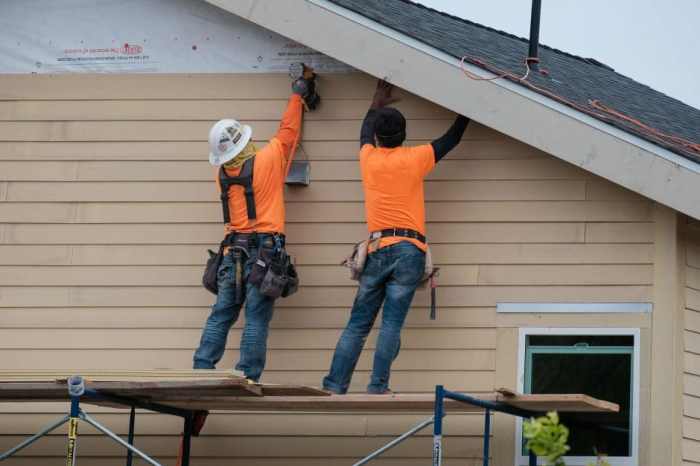
Source: mtcopeland.com
In conclusion, choosing the right siding contractors involves careful consideration of material types, contractor qualifications, and the project’s specifics. A well-planned approach, including thorough research, multiple bids, and clear communication, leads to a successful and satisfying outcome. Understanding the process, from initial consultation to final maintenance, empowers homeowners to make informed decisions and ensure their siding project meets their expectations. This comprehensive guide equips homeowners with the knowledge necessary to navigate the world of siding contractors.
